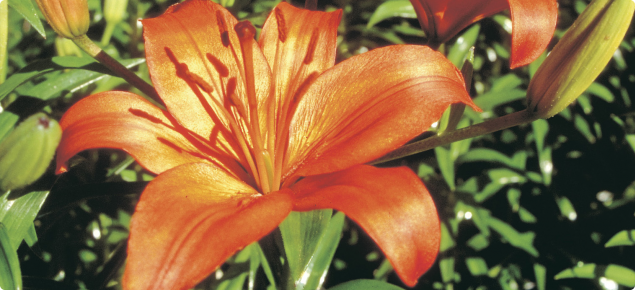Introduction
As soon as flowers are harvested they begin to deteriorate. Correct postharvest handling is essential to maximise vase life and maintain flower and foliage quality. Dehydration is the major factor leading to deterioration of flowers and foliage. It can be minimised by controlling temperature and relative humidity during postharvest storage.
Temperature
Temperature is the most important post-harvest factor. Lowering flower/foliage temperature as soon as possible after harvest:
- reduces respiration rate
- reduces water loss
- suppresses ethylene production and reduces sensitivity to ethylene
- slows microbial activity.
You need to know optimum storage temperatures for storing flowers.
Most temperate crops are not chilling-sensitive and can be stored between 0oC and 2oC for long periods without significant loss of quality. Freezing must be avoided and, because of temperature fluctuations in coolrooms, it is not always safe to set temperatures close to zero.
Tropical and subtropical crops are chilling-sensitive and may be damaged at low temperatures (below 13oC). The temperature at which chilling injury will occur depends on the specific crop and pre-harvest growing conditions.
It is important to know the correct storage temperature for each product handled. If possible, harvest in the cool of the day to avoid field heating of flowers. Once flowers are harvested, remove them from the field and cool as quickly as possible after processing. See ‘Cooling cut flowers and foliage’ for methods of cooling flowers.
Relative humidity
Maintaining high humidity (95–98%) around harvested produce reduces water loss. Dehydration greatly affects quality, causing wilting and shrivelling. The use of PVC, ethylene absorbing wraps or newspaper can greatly assist in maintaining humidity.
If flowers are wrapped too tightly, they can be damaged from a build-up of respiration gas. High humidity should be used with low temperature storage because humid conditions in combination with warm temperatures favour the growth of fungi and bacteria.
Flowers may need to be dipped in fungicides to prevent damage from diseases during storage.
Storage recommendations
Test experimental batches of particular crops at different temperatures if their optimum storage temperature is not known. For example, zantedeschia should not be stored below 4oC. Storage temperature for nerines varies between cultivars from 2 to 7oC.

